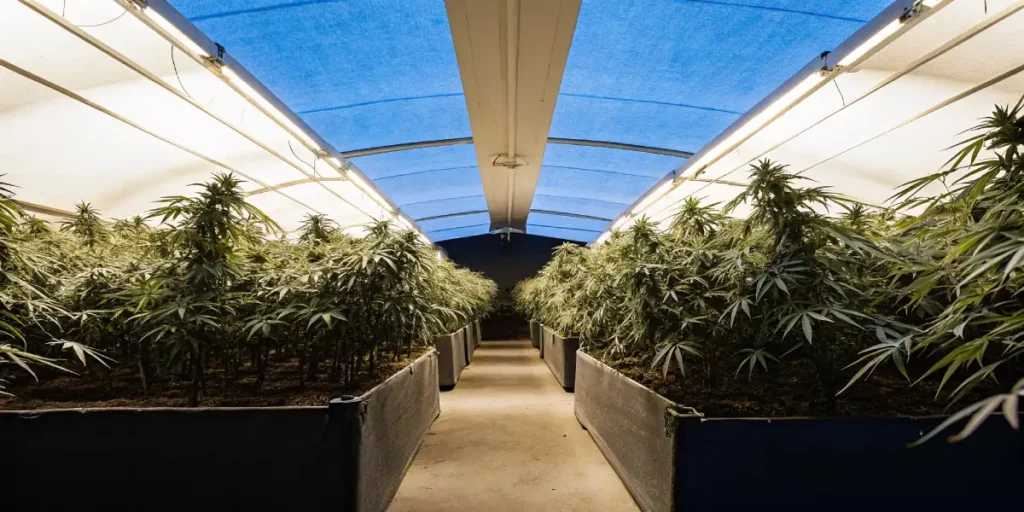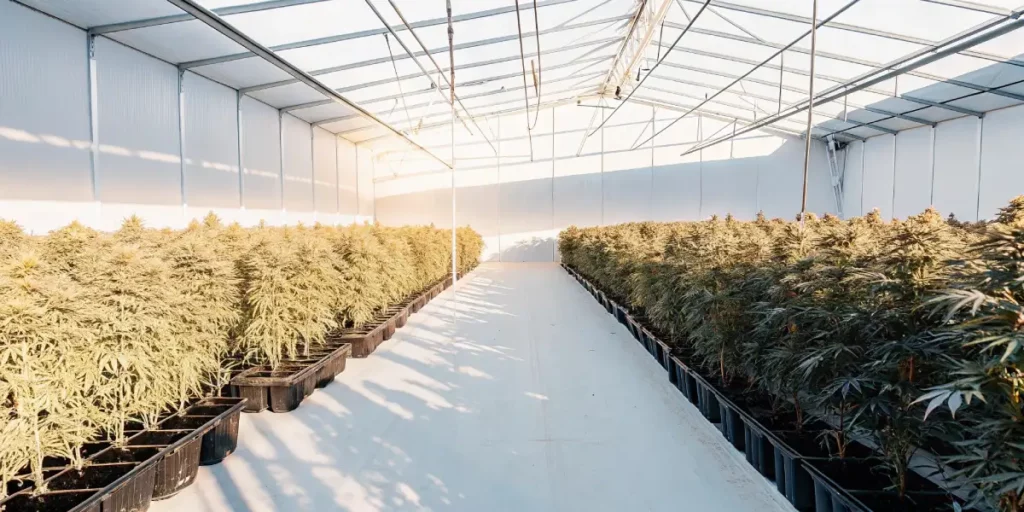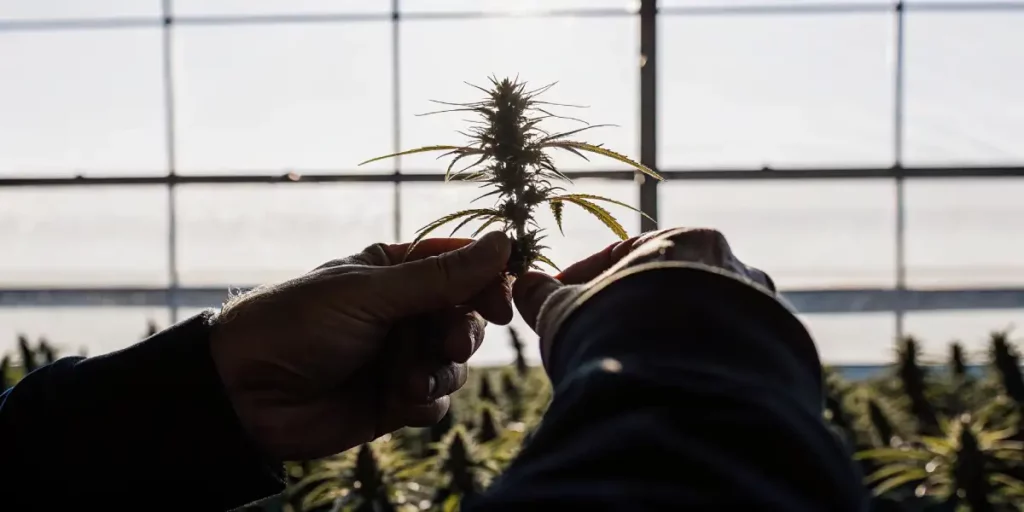Cloning autoflower cannabis plants is a topic that sparks debate among growers. Autoflowers are unique due to their ability to flower automatically after a certain period, rather than relying on light cycles like photoperiod strains. This characteristic raises the question: can you clone autoflower plants successfully?
Unlike traditional cannabis strains, autoflowers have a fixed lifecycle. This means they transition from vegetative growth to flowering on their own schedule. When considering cloning, this lifecycle becomes a significant factor. The question of whether you can clone autoflowers involves knowing how their growth pattern impacts cloning success.
One of the main challenges in cloning autoflower plants is timing. Since autoflowers have a predetermined lifecycle, taking a clone means that the new plant will be at the same stage of life as the mother plant. This can limit the time the clone has to grow and mature, often leading to smaller yields.
How to Clone Autoflowering Cannabis Plants?
Cloning autoflowering cannabis plants requires a slightly different approach compared to photoperiod strains. The first step is selecting a healthy mother plant. The more vigorous the mother, the higher the chances of a successful clone. Ensure the plant is healthy, pest-free, and in its prime vegetative state.
When taking a cutting, use sterilized tools to prevent infection. Cut a healthy branch with a few nodes, about 4-6 inches long. Immediately place the cutting in water or a rooting gel to prevent air bubbles from entering the stem, which can hinder root development.
Can you clone autoflower plants successfully? Knowing the intricacies of how to clone autoflowering cannabis plants can greatly enhance your chances of success. It’s crucial to time your cloning attempts during the mother’s vegetative phase to maximize growth potential. Proper care, such as ensuring the cutting has ample moisture and nutrients, is vital for root development.
Once the cutting is taken, consider using a gentle nutrient solution to support the clone. This helps in maintaining vitality and promoting robust root growth. Monitoring the pH levels of the medium can also prevent nutrient lockout, a common issue that can stifle clone growth. Attention to these details can make a significant difference in the success of your endeavor.
The Best Way to Clone Autoflower Strains
Using a humidity dome can improve your autoflower clone success rate. High humidity levels help the cutting retain moisture while it develops roots. Keep the temperature warm and consistent, ideally between 70-75°F. Light should be gentle, around 18-24 hours per day, to encourage growth without overwhelming the young plant.
Some growers prefer using rooting gels or powders to enhance root formation. These products contain hormones that stimulate root growth and can increase the likelihood of a successful clone. Consider experimenting with different products to see what works best for your setup.
Knowing the best way to clone autoflower strains involves not just the initial cutting but also the care provided throughout the rooting process. A stable environment with consistent temperature and humidity is crucial. Using a heating mat can help maintain optimal soil temperature, promoting faster root growth.
Lighting plays a pivotal role in the development of clones. Using LED lights can provide the necessary spectrum without producing excessive heat. Positioning the lights at a safe distance ensures the clones receive adequate light without risking dehydration. These considerations are essential for optimizing the autoflower clone success rate.

Challenges in Cloning Autoflower Plants
One significant challenge in cloning autoflower plants is the limited time frame. Because clones inherit the age of the mother plant, they may have less time to establish roots and grow before flowering begins. This can result in smaller plants and reduced yields.
Another challenge is the genetic predisposition of autoflowers. Since they are bred to flower quickly, any stress, including cloning, can trigger early flowering. This makes the timing and care of clones even more crucial for success.
Among the challenges in cloning autoflower plants, managing stress is one of the most critical factors. Clones are highly sensitive to environmental changes, and any fluctuation can adversely affect their development. Ensuring a stable environment is key to mitigating stress-induced flowering.
The choice of substrate can also influence success. Some growers find that using a mix with good aeration, such as coco coir, can help roots develop more efficiently. Experimenting with different growing mediums can provide insights into what works best for your specific strains and conditions.
Can you clone autoflower? Cloning autoflowering weed tips and tricks
Can you clone autoflower plants successfully? For those determined to try cloning autoflowering weed, there are several tips to increase the likelihood of success. First, ensure your cloning environment is optimal. This includes maintaining proper humidity, temperature, and light conditions.
Patience is key. Autoflower clones may take longer to root compared to photoperiod clones. Keep an eye on the clones and make adjustments as needed. If a clone shows signs of stress, consider reducing light intensity or increasing humidity to aid recovery.
Another valuable tip is to use anti-wilt sprays that can help reduce water loss from leaves while roots are still developing. This can be particularly useful in dry climates where maintaining high humidity is challenging.
Keeping a detailed log of each cloning attempt, noting environmental conditions and outcomes, can be invaluable. Over time, this data helps refine your approach, increasing the likelihood of successful cloning of autoflowering weed.
Selecting the Right Autoflower Strain
Not all autoflower strains are equal when it comes to cloning. Some strains are more forgiving and resilient, making them better candidates for cloning experiments. The Amnesia Haze Auto from Global Green Genetics is a popular choice due to its strong genetics and adaptability.
Experimenting with different strains can provide valuable insights into which ones respond best to cloning. Keep records of each attempt, noting the conditions and outcomes, to refine your approach over time.
When selecting the right autoflower strain for cloning, consider those known for their vigor and resistance to environmental stressors. Strains that have a reputation for robust growth can provide a better starting point for cloning success.
Consulting with other growers and researching strain reviews can also offer guidance on which strains have been successfully cloned by others. Community insights can be a valuable resource in your quest to master the art of cloning autoflowers.

FAQs of can you clone autoflower
Can you clone autoflower plants successfully?
Can you clone autoflower plants? Yes, it is possible, but success rates can vary. The key lies in timing and environmental conditions. Since autoflowers have a fixed lifecycle, clones will inherit the age of the mother, which can limit growth and yield potential.
Using proper techniques such as maintaining high humidity, warm temperatures, and gentle lighting can enhance the chances of a successful clone. Experimenting with different strains can also help identify those that respond better to cloning.
Knowing the nuances of how to clone autoflowering cannabis plants can be the difference between success and failure. Being aware of the clone’s inherited lifecycle is crucial to managing expectations regarding growth and yield.
While the autoflower clone success rate might not match that of photoperiod strains, with careful planning and execution, growers can still achieve satisfactory results. Patience and persistence are essential traits for anyone venturing into cloning autoflowers.
What is the best way to clone autoflower strains?
The best way to clone autoflower strains involves careful selection of the mother plant, using sterilized tools, and providing optimal environmental conditions. A humidity dome can help maintain moisture levels, and using rooting gels can promote root formation.
Choose strains known for their robustness and adaptability, such as Blue Dream Auto, to increase your chances of success. Keep detailed records to learn from each attempt and improve your techniques over time.
Besides to environmental control, the best way to clone autoflower strains may include using a light feeding regime to support the clone’s early growth phase. This provides essential nutrients without overwhelming the young plant.
Networking with other growers can also provide insights into successful cloning practices. Sharing experiences and tips can help refine your cloning strategy, making future attempts more successful and rewarding.
Can you clone autoflower plants? challenges and considerations
Cloning autoflower plants presents challenges such as limited growth time and potential early flowering due to stress. These factors can lead to smaller plants and lower yields compared to photoperiod clones. Many growers ask, can you clone autoflower strains effectively? While it’s possible, the results are often less predictable and require precise timing and care.
Choosing resilient strains and maintaining optimal environmental conditions can help mitigate some of these challenges. Patience and careful monitoring are essential to successfully clone autoflowers.
Another challenge lies in the genetic variability of autoflowers. Some strains may react differently to cloning, making it necessary to experiment with several strains to find the most suitable candidates for cloning.
Knowing the challenges in cloning autoflower plants is crucial for developing effective strategies to overcome them. By focusing on strain selection and environmental control, growers can increase the likelihood of success and improve their skills over time.
How does the autoflower clone success rate compare to photoperiod strains?
The autoflower clone success rate is generally lower than that of photoperiod strains. This is because autoflower clones inherit the age of the mother plant, limiting their growth window. As a result, yields may be smaller.
Despite these challenges, with the right techniques and strain selection, growers can achieve satisfactory results. Experimenting with different methods and documenting outcomes can help improve success rates over time.
While the inherent lifecycle of autoflowers presents challenges, the autoflower clone success rate can be improved by consistent care and attention to detail. Focusing on environmental stability and nutrient balance is key to maximizing growth potential.
By comparing results with photoperiod clones and adjusting techniques accordingly, growers can develop a deeper knowing of what works best for autoflowers. This approach can lead to better outcomes and more rewarding cloning experiences.
Can you clone autoflower? best strains and tips for successful cloning
Can you clone autoflower strains successfully? Certain autoflower strains are more suited for cloning due to their genetic resilience and adaptability. Strains like Auto Cinderella Jack and Auto Amnesia Haze are known for their vigorous growth and can be more forgiving when cloned.
Choosing strains with strong genetics from reputable sources like Global Green Genetics can enhance your chances of a successful cloning experience. Researching and experimenting with different strains will help identify those best suited for your growing conditions.
Exploring the diverse range of autoflower strains can reveal hidden gems that are particularly suited to cloning. Some strains may offer unique traits that facilitate the cloning process or enhance overall resilience.
As you become more familiar with the characteristics of various strains, you’ll be better equipped to select those that align with your cloning goals. This knowledge can be instrumental in achieving a higher success rate and more robust clones.

